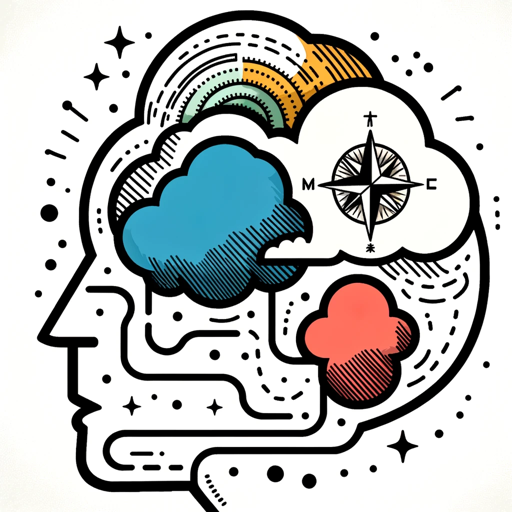User Persona Finder (Psychographics +Demographics)-AI-powered persona creation tool
AI-driven customer persona insights made easy
Describe the emotional drivers of my target market.
How can I tailor products to my audience's needs?
What are some creative ways to engage my target audience?
Analyze the social habits of my ideal customer.
Related Tools
Load MorePersona Creator
I craft detailed user & buyer personas to align marketing, sales, product and operational teams.

Target Audience Persona GPT
Define and describe your target audience segment.

User Persona Generator
Simulate a user & buyer persona for your business. Understand your ideal customer without running 100+ interviews.

Buyer Persona GPT for Sales
It's like a dynamic persona card! Enter a [Job Title + Company Name] to start strong strategizing an approach for this persona.

5W Avatar Creator
I help build detailed profiles of ideal prospects using the avatar creator process from www.BPMMethod.com
BrandPersona® - The Clever Target Group Scan
Grow your brand by tapping into your audience's secret needs and desires with AI. Based on behavioral science. Ideal for sales, advertising, branding, and high-fiving yourself in the mirror.
20.0 / 5 (200 votes)
Introduction to User Persona Finder (Psychographics + Demographics)
User Persona Finder (Psychographics + Demographics) is a specialized tool designed to create in-depth user personas, which are crucial for businesses, marketers, and product developers to deeply understand their target audience. The tool integrates both psychographic (lifestyle, values, personality traits, goals, interests) and demographic (age, income, education, occupation) information to create holistic profiles of ideal customers. By combining these two data sets, the tool helps identify not just 'who' the customers are, but 'why' they behave in certain ways and 'how' they make decisions. For example, if a company is developing a fitness app targeting busy professionals, the tool can build a persona like 'Emily, 35, working mom, income $80k, motivated by the need for balance between health and career, but struggles to find time for workouts.' With psychographics, it goes further: 'She feels guilty about neglecting self-care, is inspired by stories of people overcoming similar challenges, and spends time on social media for quick workout tips.' This level of insight allows for a more tailored product offering.

Main Functions of User Persona Finder (Psychographics + Demographics)
Persona Creation
Example
The tool gathers psychographic and demographic data to craft detailed personas that represent an ideal customer segment. It allows businesses to understand key factors like age, lifestyle, motivations, and challenges of their audience.
Scenario
A startup launching a financial app for Gen Z uses the tool to identify 'Lisa, a 22-year-old student who values financial independence but feels overwhelmed by complex finance terms.' Based on this persona, the company can design an easy-to-use, visually engaging interface with simple financial literacy content.
Customer Segmentation
Example
This function enables businesses to break down their audience into specific segments, each with distinct characteristics and behaviors. Segments are based on a combination of demographic factors like income and education, and psychographic traits like values or buying motivations.
Scenario
A travel agency uses the segmentation feature to target three groups: adventure-seekers, budget travelers, and luxury vacationers. By identifying their distinct needs, the agency tailors different marketing strategies, such as promoting low-cost trips to budget travelers and exclusive packages to luxury travelers.
Behavioral Insights
Example
Through psychographic data, the tool provides deeper insights into customer behavior—how they think, their decision-making processes, and what influences them. This helps brands predict customer actions and develop strategies to meet their expectations.
Scenario
A fitness brand discovers through behavioral insights that a significant portion of its audience procrastinates on their fitness goals due to lack of motivation. Armed with this insight, the brand develops a motivational email campaign with personal stories and rewards for consistent workout habits.
Ideal Users of User Persona Finder (Psychographics + Demographics)
Marketers and Brand Strategists
Marketers benefit from the User Persona Finder by gaining a deeper understanding of their target audience’s motivations, behaviors, and preferences. With this tool, they can craft highly targeted campaigns that resonate with specific customer segments. For instance, a clothing brand can use personas to identify that their audience values sustainable fashion and are likely to respond well to campaigns focused on ethical sourcing.
Product Developers and UX Designers
Product teams use the tool to design products that cater to the specific needs, preferences, and pain points of their target users. By understanding both the demographic and psychographic makeup of users, developers can create user-friendly products that align with customers’ values and goals. For example, a UX designer working on a mental health app might find that their target audience prefers features that allow private journaling and quick access to mental health resources, based on the psychographics of a persona who values privacy and speed.

How to Use User Persona Finder (Psychographics +Demographics)
1
Visit aichatonline.org for a free trial without login, no need for ChatGPT Plus, to explore the User Persona Finder tool.
2
Define your product or service, and specify the target audience, such as demographics, industry, and country for better persona insights.
3
Choose the persona type—38 detailed parameters for a comprehensive persona, or a smaller version with 15 key parameters for a quicker overview.
4
Answer guided questions about your audience’s problems, motivations, and challenges to help generate the most accurate personas.
5
Review and refine the generated persona to tailor it further according to your business goals or marketing strategies.
Try other advanced and practical GPTs
Soccer Betting Analyser or predictor
AI-driven insights for smarter betting

Dan Kennedy Magnetic Marketing Consulting
AI-driven tool for magnetic marketing success.

#Murros - EdTech Disruption BOT
AI-powered insights into education's future.
Process Mapper AI
AI-Powered Process Mapping Made Easy

Dream Meaning Mapper
AI-driven dream analysis for deep insights.

Accounting Mentor
AI-powered assistant for mastering accounting
What's Shaking?! (aka. Earthquake Info)
AI-powered real-time earthquake information

Crochet Amigurumi Creator
AI-Powered Custom Crochet Patterns

Crochet Companion
AI-driven crochet pattern generation for amigurumi

Master Thesis Writer
AI-Powered Thesis Writing Assistance

Clipping + Resumo
AI-Powered Summaries Made Simple

Digital Media Assistant
AI-powered tool for viral video success

- Market Research
- Product Design
- Customer Insights
- Campaign Planning
- User Testing
Detailed Q&A about User Persona Finder
What is the purpose of User Persona Finder?
The tool helps businesses and marketers generate detailed Ideal Customer Personas by analyzing demographics and psychographics. It provides insights into customer goals, motivations, pain points, and decision-making processes.
Can I create both simple and complex personas?
Yes, the tool allows users to choose between two options: a comprehensive persona with 38 parameters, or a more streamlined version with 15 parameters. Each persona includes in-depth psychographic insights.
What industries can benefit from using this tool?
Any industry looking to understand its target audience better can use the User Persona Finder. Common use cases include retail, technology, healthcare, education, and marketing agencies.
How do psychographics differ from demographics in this tool?
Demographics cover basic traits like age, gender, and income, while psychographics explore motivations, goals, pain points, beliefs, and behaviors—offering deeper insights into the mindset and actions of your audience.
Do I need specialized knowledge to use this tool?
No, the tool is designed to be user-friendly, guiding you through the process with easy-to-understand questions and offering flexibility for various levels of experience, from beginners to experts.